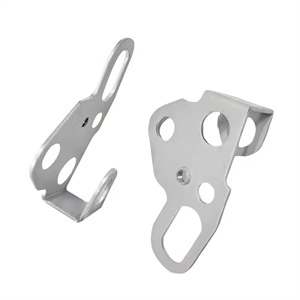The application of High Precision Stamping in communication equipment is crucial, as its high precision, stability, and reliability make it an ideal choice for manufacturing high-performance communication equipment components. The following are specific applications:
Precision connectors:
A large number of precision connectors are required in communication equipment to achieve connections between circuits. High Precision Stamping technology can process connector pins and sockets with small tolerances and high contact reliability, ensuring the stability and reliability of signal transmission.
High frequency components:
In wireless communication equipment, the performance of high-frequency components (such as filters, antennas, etc.) is crucial to communication quality. High Precision Stamping technology can accurately process the complex shapes and fine structures of high-frequency components to meet the requirements of high-frequency signal transmission.
Cooling components:
Communication equipment generates a large amount of heat during operation, and an effective heat dissipation system is needed to maintain the stable operation of the equipment. High Precision Stamping technology can process components such as heat sinks and heat pipes with complex heat dissipation structures and precise dimensions, improving the heat dissipation efficiency of equipment.
Internal structural components:
Communication equipment requires various precision structural components to support and fix electronic components internally. High Precision Stamping technology can process internal structural components with high precision and strength, ensuring the stability and reliability of the equipment’s internal structure.
The application of High Precision Stamping in the field of communication equipment is crucial.
Firstly, it is widely used in the manufacturing of micro connectors in communication equipment. These connectors require extremely precise dimensions and shapes to ensure reliable signal transmission in extremely small spaces. For example, for the board to board connectors inside mobile phones, high-precision stamping can produce connector components with minimal spacing and precise pins, meeting the needs of high-speed data transmission.
Secondly, high-precision stamping plays an important role in the manufacturing of RF modules. The filters, couplers, and other components in the RF module require high-precision metal components to achieve accurate frequency response and signal separation. For example, RF filters in 5G communication equipment can ensure good filtering performance through high-precision stamped metal cavities and covers.
Furthermore, for sensors in communication equipment, high-precision stamping can produce support and protection structures for sensitive components. These structures require precise dimensions and good stability to ensure the accuracy and reliability of sensors. For example, humidity sensors in environmental monitoring communication equipment, high-precision stamped casings can provide precise installation and protection.
In addition, high-precision stamping is used in the optical modules of communication equipment to manufacture metal casings for optical transceivers and fixed brackets for optical components. These components require strict precision control to ensure accurate transmission and reception of optical signals. For example, the metal casing in high-speed optical communication modules can achieve close coordination with optical components and reduce optical loss through high-precision stamping.
High Precision Stamping provides important technical support for the high performance, miniaturization, and high reliability of communication equipment.
